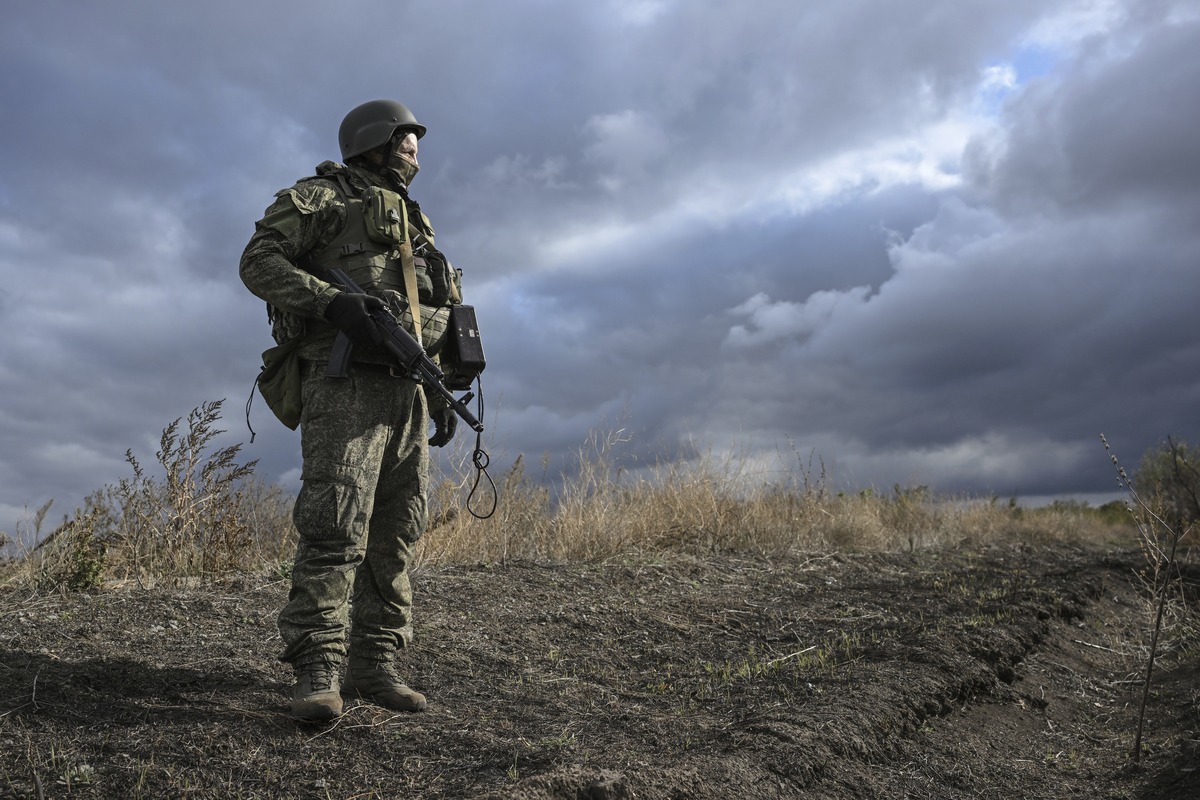- cross-posted to:
- [email protected]
- [email protected]
- cross-posted to:
- [email protected]
- [email protected]
This is an automated archive made by the Lemmit Bot.
The original was posted on /r/ukrainewarvideoreport by /u/Khabooem on 2024-10-28 19:58:13+00:00.
Russia sustained more than 10,000 casualties in a week, according to statistics from Ukraine’s military, with the fast-approaching winter season unlikely to bring a lull in high numbers of fighters killed and injured in the grinding conflict.
Moscow has suffered a total of 690,720 casualties since February 2022, Ukraine’s General Staff said on Monday. This includes 1,680 fighters being killed or injured in the past 24 hours, according to Kyiv.
This figure also brings Moscow’s total casualties, per Kyiv’s count, to 10,490 in the previous seven days.
Newsweek could not independently verify these figures, and has reached out to the Russian Defense Ministry for comment via email.
A Russian serviceman of the 1430th Motorised Rifle Gaurds Regiment of the Russian Armed Forces is seen at a position in the Zaporozhye sector of the frontline amid Russia’s military operation in Ukraine. This image… More Konstantin Mihalchevskiy / Sputnik via AP
Casualty counts and battlefield losses are disputed during active conflicts, and experts urge caution when considering tallies offered by either party in a war. Moscow and Kyiv very rarely nod to their own casualty counts.
Read moreWould North Korea fighting in Ukraine make conflict a world war?Deadly virus brings new “serious” threat to UkraineUkraine war map latest as Russia claims new settlement captured
Russia does not offer regular updates on purported Ukrainian casualties, but said on Monday that Ukraine had sustained more 2,000 casualties across the front lines in the northeast and east of the country in the previous day’s fighting. Newsweek has contacted the Ukrainian military for comment via email.
The Wall Street Journal reported in mid-September that the combined casualty count for Ukrainian and Russian forces had reached approximately 1 million. While Ukraine is wrestling with ways to replenish its tired forces, Russia particularly relies on infantry-heavy assaults that generate high numbers of casualties.
Moscow is known for what have been dubbed “meat grinder” tactics, allowing the Kremlin to slowly but surely advance in the east of Ukraine throughout the year, albeit at a high cost to Russia’s personnel. In July, the Chief of the Defense Staff for the British military, Admiral Sir Tony Radakin, said it would take the Kremlin five years “to reconstitute the Russian army to where it was in February 2022.”
Russian troops have also been battling Ukraine’s surprise incursion into its border Kursk region from early August, while fighting has blazed on in the northeast of Ukraine.
On Friday, Ukraine’s top soldier, General Oleksandr Syrskyi, said Russia had sustained 17,819 casualties, including those killed, injured and captured, in Kursk in the almost three-month incursion. Russian President Vladimir Putin had said Ukrainian troops were “encircled” in Kursk.
Earlier this month, the British Defense Ministry said Russia had sustained the highest number of casualties recorded in a single month in September, averaging at 1,271 fighters killed and injured each day. The British government predicted in early October that Russia’s reported casualty count will stay upwards of 1,000 each day heading into the winter.
Lieutenant Colonel Janek Kesselmann, the deputy chief of Estonia’s military intelligence center, said late last week that Russia was likely to sustain around 40,000 casualties in October.
London has previously said Russia is able to pull around 30,000 new recruits into the military each month.
Western, South Korean and Ukrainian intelligence has suggested Russia is training thousands of North Korean troops on Russian soil, and Ukrainian leader Volodymyr Zelensky said on Friday that “any day now their soldiers may appear on the battlefield fighting against Ukraine.”
The appearance of North Korean forces in Russia, and indications they could be deployed to Kursk, suggests the Kremlin’s “entire force-generation system is very tenuous,” the U.S.-based Institute for the Study of War think tank said on Sunday.
“The costs of fueling the war will increase as Russia continues to burn through manpower and materiel on the frontline,” the think tank assessed.

